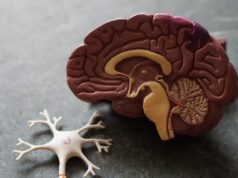By Hannah Woolley
The RACE scale has been successfully used by emergency medical services (EMS) agencies to reduce door to arterial puncture times for acute stroke patients with large vessel occlusion. That is what a study has found and the results were reported by Brijesh P Mehta (Neurointerventional surgeon; director of Stroke and Neurocritical care at the Memorial Neuroscience Institute, Florida, USA) at the International Stroke Conference (ISC; 24–26 January 2018, Los Angeles, USA).
Pre-hospital identification of large vessel occlusion (LVO) acute stroke patients could lead to faster triage and treatment. The Rapid Arterial oCclusion Evaluation (RACE) scale was developed to help identify these patients. The RACE scale uses cortical signs, as well as components from traditional scales to assess the likelihood of LVO; a RACE score of ≥5 corresponds to a NIHSS score of ≥8. It has a sensitivity of 85%, a specificity of 68%, a pulse pressure variation of 42% and a NPV of 94% (Stroke. 2014;45:87-91).
A study conducted by Mehta and colleagues examined whether the RACE scale could be reliably implemented in a real-world setting with multiple Emergency Medical Services (EMS) agencies and reduce time to arterial puncture. It was a prospective study carried out across two high volume comprehensive stroke centres in south Florida. Eight EMS agencies were taught how to use the RACE scale utilising an online training video (https://www.youtube.com/watch?v=9Sx0pJueV50) and medics were instructed to perform a RACE scale with all field stroke assessments. If a patient was found to have a RACE score of 5 or more, the neurointerventional cath lab team was alerted prior to EMS arrival as part of the in-hospital work flow.
During the study period (January 2016 to June 2017), a RACE score was provided for 759 out of 1,498 EMS stroke alerts (51%). Higher pre-hospital RACE scores correlated to higher NIHSS scores and LVO was found in 13% (106) patients with a RACE score. A RACE score of 5 or more was able to identify 64% of all patients with a LVO (sensitivity 64%; specificity 72%; PPV 30%, NPV 93%; accuracy 71%) but of the 260 patients with a RACE score of 5 or more, only 68 (26%) were found to have LVO while 29 patients (11%) had intracranial haemorrhage. Of the 499 patients with a RACE score of less than five, 8% (38) had LVO.
When a high RACE score triggered early (ie, pre-imaging) activation of the cath lab team, the median door-to-arterial-puncture time was 68 minutes as a result of parallel work flow. However, for EMS stroke alerts without an accompanying RACE score, the median door to arterial puncture time was 91 minutes as a result of the sequential workflow. “Every 30 minutes delay in time to reperfusion reduces the likelihood of a good outcome by 14–18%”, explained Mehta. Therefore, a stroke system of care should be designed to treat LVO strokes with a high level of efficiency.
Use of the RACE scale resulted in a high number of false positives for LVO detection as it weighs motor deficits more than cortical signs. For example, gaze preference is the strongest predictor for possible LVO but only assigned one point on the scale. The study also found that intracranial haemorrhage and other stroke mimics result in high RACE scores due to similar deficits as a middle cerebral artery stroke syndrome.
Overall, the study found that the RACE scale can be successfully implemented across multiple EMS agencies in an urban setting and results in faster door to arterial puncture times for LVO stroke patients. They also found that while RACE score of five or higher is associated with greater likelihood of LVO, there were a significant number of false positives.
“Further refinement of pre-hospital stroke severity scales is warranted to improve the accuracy of this approach and EMS training curriculums for assessment of stroke patients is critical”, concluded Mehta.












